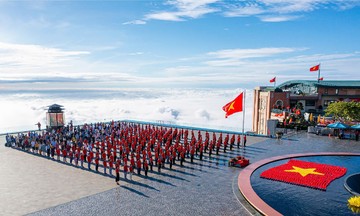Vietnam welcomed nearly 10.7 million international tourists and 77.5 million domestic tourists in the first half of 2025, generating approximately 515,000 billion VND in tourism revenue, according to data released by the Vietnam National Administration of Tourism on 5/7.
Ho Chi Minh City led the nation with 22 million visitors and nearly 118,000 billion VND in revenue. While both figures represent year-over-year growth, the city has only achieved 41% of its visitor target and 45% of its revenue target for the year.
Hanoi ranked second in visitor numbers with nearly 16 million, followed by Quang Ninh (12 million), Thanh Hoa (10.5 million), Ninh Binh (7.2 million), Kien Giang (7 million), Khanh Hoa (6.2 million), Nghe An (6.2 million), and Da Nang (5.8 million). Hue, Ba Ria Vung Tau, and Hai Phong also performed well, each exceeding 3 million visitors.
Da Nang ranked second in tourism revenue with over 82,300 billion VND, followed by Hanoi with over 62,300 billion VND. Nghe An, Khanh Hoa, Kien Giang, and Quang Ninh also generated over 10,000 billion VND each.
Ho Chi Minh City's strong performance in the first half of the year was driven by events like the 30/4 parade and holidays such as the New Year and Lunar New Year. However, average spending per visitor remained relatively low at just over two million VND, trailing behind Hanoi, Khanh Hoa, and Kien Giang, where visitors spent 4-5 million VND.
Overall, both visitor numbers and tourism revenue increased across Vietnam in the first six months of 2025 compared to the same period last year. Prime Minister Pham Minh Chinh highlighted tourism as one of the 10 bright spots of the first half of the year during a government meeting on 3/7, according to the Vietnam National Administration of Tourism.
July 2025 also marks the 65th anniversary of Vietnam's tourism industry.
The Vietnam Tourism Company, under the Ministry of Foreign Trade, was established on 9/7/1960, marking the birth of the Vietnamese tourism industry during a period of national division. During this time, tourism primarily served diplomatic purposes, welcoming international delegations and experts.
Following reunification in 1975, the tourism sector entered a period of reconstruction under a subsidized economy. Activities focused on taking over tourism facilities in the south and investing in development in areas with potential.
 |
Tourists enjoy a boat tour in Nha Trang Bay this summer. Photo: Bui Toan |
Tourists enjoy a boat tour in Nha Trang Bay this summer. Photo: Bui Toan
A turning point came after 1986, when tourism gained access to international markets, expanded international relations, and improved service quality. The period from 1990 to 2019 was a time of opening, integration, and accelerated development. 2019 marked a golden age for Vietnamese tourism, with a record 18 million international visitors.
The Ministry of Culture, Sports, and Tourism noted that from 2020 to 2025, Vietnamese tourism not only recovered successfully but also reached new heights, earning recognition from tourists and international award organizations.
2025 is projected to surpass the 2019 record, with a target of 22-23 million visitors. Tourism experts and travel company CEOs believe this target is achievable by the end of the year.
Phuong Anh












